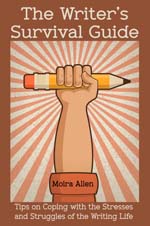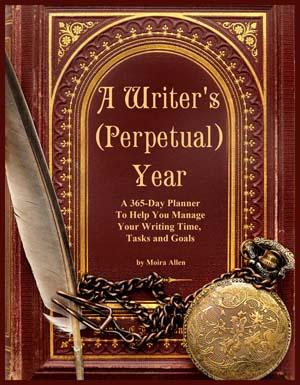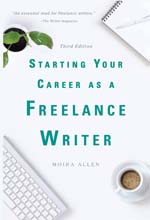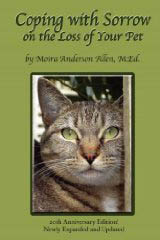 Your Guide to a Successful Writing Career
| |||
|
by Hilary Conner
The best way to begin your research is by reading forensics books. Start with a few generalized books that cover an assortment of forensic specialties. Choose several books, as authors tend to vary their in-depth coverage between the specialties. While books that were written over five years ago are still great resources, pick at least one book that is less than three years old, since forensic practices are affected by case law and new scientific and technological discoveries. After you master the basics, you'll be ready to move onto titles that cover individual topics in greater depth. Start with the Howdunit series from Writer's Digest Books. There are also a few other forensic books in print written specifically for writers. A wealth of topic specific books written by experienced forensic professionals are readily available and new titles appear in print each year. These range from textbooks for students studying the forensic sciences; to the biographies of career forensic scientists, which contain the details of their most memorable cases. Visit bookseller websites and run keyword and title searches using terms like "forensics", "forensic science" and the names of the various forensic specialties. Amazon's book recommendations feature can be a great tool as well. Regardless of where you purchase your books, it pays to favorably rate the mystery writing how-to and forensics books you already own on Amazon's site. Their software will tailor its book recommendations towards these topics, which can be another great way to find new and helpful books. The bibliography pages at the end of each reference book can also be a useful resource for finding additional forensics books, as well as articles in professional journals that deal with specific forensic topics; which brings us to the subject of library based research.
Libraries, most especially college and university libraries, are wonderful resources for finding information. These libraries house academic texts and often have specialized collections and rare materials. The college library is also the place to research articles from professional, scientific and academic journals. These journals are a great way to find information about the latest news, breakthroughs, theories and research within the various forensic specialties. The reference librarians can help you find the right journals for your research interests. They can assist you in finding the information you need to research a topic or find the answer to a question. Internet subscription based databases are also a great research tool. These pricey databases are often accessible for free at many public college and university libraries. Using your home computer, type "forensics", "forensic science" or the name of a forensic specialty into a search engine. Many of the sites you will find include links to other forensics websites, so you can create a forensics virtual reference library pretty quickly. While the internet is a wonderful research tool, misleading and inaccurate information can be found online as well. So how do you evaluate the accuracy of forensics information on the web? Look for sites that are affiliated with or are linked to educational institutions, media outlets that investigate and cover forensic issues, professional forensics organizations, law enforcement agencies, and professional forensic investigators.
Sometimes the best method for finding detailed information or answering a puzzling question is to interview a professional forensic scientist. Besides looking for interviewees among the authors of forensics books and published studies, you may find a helpful forensics professional teaching at your local college. A growing number of schools have forensic science and criminal justice degree programs. Even colleges that don't have a forensic science department sometimes offer forensic courses within other departments, such as forensic chemistry. Since most schools have websites listing their degree programs, courses and faculty members, locating a forensic scientist at a nearby college could only be a few mouse clicks away. Interviews can be conducted in person, by telephone or through email. Anne Wingate's Scene of the Crime includes a tutorial on interviewing experts. If you need to polish your interviewing skills, read an interviewing guide, such as Creative Interviewing: The Writer's Guide to Gathering Information by Asking Questions by Ken Metzler. Always remember to thank your expert for their time and send a follow up "Thank you" note. Now let's take a look at some of the many forensic specialties and discuss how your research can help you brainstorm story and character ideas.
Almost all crime scenes contain fingerprint evidence. If fingerprint evidence collection, processing and analysis are part of your story, you'll need to learn the basic methodology and terminology. You'll need to know the difference between patent and latent prints and how each type is collected. Some prints are made visible by using powders and others by the use of chemical processes, requiring one or more steps. The Forensic Casebook by N.E. Genge has a nice little section covering this topic. Some chemical methods are more delicate in nature, so laboratory errors can damage or even destroy print evidence. Such an occurrence could make an interesting plot or subplot for a story. Do you know the eight patterns found in fingerprints? Are you familiar with commonly used terms like "delta" and "bifurcation"? Here's a fun way to supplement your reading research: Buy a magnifying glass and an ink stamp pad at an office supply store. Fingerprint yourself and a few friends or relatives. Use the magnifying glass to study the prints. What patterns do you see? Write down a description of each print. It will soon become easier to recognize and describe fingerprint patterns. Fingerprint analysis is somewhat complex. The two major classification systems in use today are the NCIC System and the FBI's AFIS (Automated Fingerprint Identification System) database. Scene of the Crime, part of the Howdunit Series, has several useful chapters on fingerprints. If fingerprint evidence, collection and analysis methods play a prominent role in your story, you'll need to spend time reading texts that deal exclusively with this topic. If your story involves complicated or intriguing details regarding the processing or analysis of fingerprint evidence, or fingerprint evidence tampering, you may want to consult with a professional forensic fingerprint analyst.
There are currently four tests in use to profile DNA evidence: the RFLP (Restriction Fragment Length Polymorphisms); PCR (Polymerase Chain Reaction); STR (Short Tandem Repeat); and mtDNA (Mitochondrial DNA). If DNA evidence plays a role in your story, you'll need to understand which DNA test would be used in a given situation and why. There are benefits and limitations to each type of DNA test in terms of time needed to test a sample, the size and type of DNA samples needed, as well as possible contamination issues. You'll also need to consider whether your story is written from the point of view of a forensic scientist working with DNA samples in a crime lab, or of a prosecutor or defense attorney dealing with DNA evidence during a murder trial. Issues regarding the collection, processing, and testing of DNA evidence, as well as possible contamination or even evidence tampering, have loads of plot and red herring potential. The STR and mtDNA tests can be useful in certain types of fictional situations, such as a thriller involving a disaster where remains need to be identified, or stories involving forensic anthropologists who are working with unearthed human remains. News stories about DNA evidence and its use in court cases are fairly common, so DNA profiling can be easily used in a story just as long as you don't bog down your readers with complicated technical minutiae.
People are simply fascinated with the criminal mind. Who are these people who commit criminal acts? What makes them tick? Forensic psychologists and psychiatrists seek to answer these questions by looking into a criminal's personality or for signs of mental illness. Criminologists study criminal behavior using a holistic approach that encompasses sociology, psychology and psychiatry. Criminology also goes beyond mental health issues to include environmental factors that can affect behavior. Developing an understanding of criminology, forensic psychology and psychiatry can be useful for creating plots, red herrings and the development of characters -- not only criminals but also forensic mental health experts and criminologists. The Criminal Mind by Katherine Ramsland is a wonderful book on the topic of criminal psychology written specifically for writers. There are many books available on the topics of forensic psychology and psychiatry, criminal profiling and criminology. Some well known criminal profilers, such as John Douglas, have written books discussing their personal experiences.
Licensed pathologists now perform most autopsies in the U.S. Pathologists as major characters, detailed passages describing autopsies, and medical descriptions of injuries are common in crime novels. So it doesn't hurt to brush up on your understanding of proper procedures and terminology. Start with Body Trauma and Causes of Death from the Writer's Digest Howdunit series. Gray's Anatomy online (https://www.bartleby.com/107/) can be an invaluable tool to help you describe injuries accurately. Several forensic pathologists have published books detailing their personal experiences, which are a boon to mystery writers. Forensic anthropologists are found in a number of mystery novels these days, whether they are examining unearthed bones or completing a facial reconstruction of a skull in the hope that members of the public will recognized the victim. Mary Manhein's Bone Lady: Life as a Forensic Anthropologist is one of an assortment of books available on the subject of forensic anthropology. These books tend to include case histories, which could serve as inspiration for story ideas.
Criminals are embracing modern computer technology as a means to commit white-collar crimes. Hacking, phishing, illegal porn, computer-based terror attacks, cyber-stalking and other forms of computer crime are a growing trend in our cyber-dependent world. Forensic investigators utilize a variety of crime-fighting tools, including specialized investigative software and hardware, to solve computer-related crimes. This timely subject is ripe with possibilities for potential story ideas. Detailed computer forensic books such as Eoghan Casey's Handbook of Computer Crime Investigation and Computer Forensics: Incident Response Essentials by Warren Krause and Jay Heiser can provide invaluable in helping your fictional investigator solve her case.
Forensic science practices are affected by court rulings, new scientific discoveries and the development of new and improved forensic tools and technologies. Currently, issues involving forensic scientific data as evidence in the courtroom and expert testimony are weighed against the Daubert standard, from the case of Daubert v. Merrill Dow Pharmaceuticals. The Daubert ruling, as well as current case law affecting forensic evidence in the courtroom, can be found at Daubert On The Web (http://www.daubertontheweb.com) Now you are ready to begin your forensics research. Remember to keep an open mind while you work. Something you read in a forensics text or journal or hear during an interview could trigger a new plot or character idea. Good luck with crafting your great mystery.
This article may not be reprinted without the author's written permission. Hilary Conner is a freelance writer and researcher from New Jersey. She has done freelance work for a role-playing game company and has written several articles on creating realistic fictional characters. She enjoys researching and studying a wide variety of disciplines, from character creation theory and forensics, to the cultures and mythologies of the North American Indian tribes. Her goals include writing a mystery novel for young adults and publishing an instruction book of her advanced beadwork jewelry designs. |
| ||
| |||




